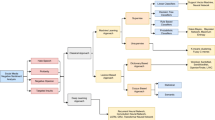Abstract
Social media provides a space for individuals, where they can share their view or opinion very easily. The use of social media is growing at a rapid pace. Users can communicate more swiftly through social media platforms like Twitter, Facebook, and YouTube. The content of social media texts is generally made up of code-mixed comments/posts and replies, and it may contain harmful or non- offensive words. Sentiment analysis on social media provides businesses with a quick and effective approach to monitor public opinion on their brand, business, goods, and other topics. In recent years, a variety of features and approaches for training sentiment classifiers for fetched datasets have been investigated, with mixed results. Twitter is a popular social media platform. It provides businesses with a quick and efficient way to assess customers’ viewpoints on issues that are crucial to their performance in the marketplace. Expanding a sentiment analysis software is a way to utilise computers to measure consumer perceptions. Analyze the sentiment from employee tweets regarding work from home is the main goal. The employees work from home tweets dataset as input was collected from twitter. Then, to analyse the sentiment the NLP techniques, text classification and deep learning algorithm were used. The experimental results shows the performance metrics such as accuracy and analyse the sentiment based on sentiment analyser into positive, negative and neutral.
Access this chapter
Tax calculation will be finalised at checkout
Purchases are for personal use only
Similar content being viewed by others
References
Carreras, X., Màrquez, L.: Boosting trees for anti-spam email filtering. arXiv:cs/0109015. https://arxiv.org/abs/cs/0109015 (2001)
Blei, D.M., Ng, A.Y., Jordan, M.I.: Latent Dirichlet allocation. J. Mach. Learn. Res. 3, 993–1022 (2003)
Hammouda, K.M., Kamel, M.S.: Efficient phrase-based document indexing for Web document clustering. IEEE Trans. Knowl. Data Eng. 16(10), 1279–1296 (2004)
Das, S.R., Chen, M.Y.: Yahoo! for Amazon: Sentiment extraction from small talk on the web. Manage. Sci. 53(9), 1375–1388 (2007)
Factiva, D.: Quick Study: Direct Correction Established Between Social Media Engagement and Strong Financial Performance. PR News (2009)
Gupta, V., Lehal, G.S.: A survey of text mining techniques and applications. J. Emerg. Technol. Web Intell. 1(1), 60–76 (2009)
Kaplan, A.M., Haenlein, M.: Users of the world, unite! The challenges and opportunities of Social Media. Bus. Horiz. 53(1), 59–68 (2010)
Tumasjan, A., Sprenger, T.O., Sandner, P.G., Welpe, I.M.: Predicting elections with twitter: What 140 characters reveal about political sentiment. Icwsm 10(1), 178–185 (2010)
DuVander, A.: Which APIs are handling billions of requests per day? Programmable Web (2012)
Aggarwal, C.C., Reddy, C.K.: Data Clustering: Algorithms and Applications. CRC Press, Boca Raton, FL, USA (2013)
Sharma, R., Nigam, S., Jain, R.: Opinion mining of movie reviews at document level. arXiv preprint arXiv:1408.3829 (2014)
Sharma, R., Nigam, S., Jain, R.: Polarity detection at sentence level. Int. J. Comput. Appl. 86(11), (2014)
Chae, B.K.: Insights from hashtag #supplychain and Twitter analytics: Considering Twitter and Twitter data for supply chain practice and research. Int. J. Prod. Econ. 165, 247–259 (2015)
Giachanou, A., Crestani, F.: Like It or Not: A Survey of Twitter Sentiment Analysis Methods. ACM Comput. Surv. 49(2), 1–41 (2016)
Abirami, A., Gayathri, V.: A survey on sentiment analysis methods and approach. In: Advanced Computing (ICoAC), 2016 Eighth International Conference on, pp. 72–76, IEEE (2017)
Ahmad, N., Siddique, J.: Personality assessment using Twitter tweets. Procedia Comput. Sci. 112, 1964–1973 (2017)
Carvalho, J.P., Rosa, H., Brogueira, G., Batista, F.: MISNIS: An intelligent platform for Twitter topic mining. Expert Syst. Appl. 89, 374–388 (2017)
Carducci, G., Rizzo, G., Monti, D., Palumbo, E., Morisio, M.: TwitPersonality: Computing personality traits from tweets using word embeddings and supervised learning. Information 9(5), 127 (2018)
Ahmad, T., Ramsay, A., Ahmed, H.: Detecting emotions in English and Arabic tweets. Information 10(3), 98 (2019)
Devlin, J., Chang, M.-W., Lee, K., Toutanova, K.: BERT: Pre-training of deep bidirectional transformers for language understanding. In: Proc. Conf. North Amer. Chapter Assoc. Comput. Linguistics, Human Lang. Technol., vol. 1, pp. 4171–4186. Association for Computational Linguistics, Minneapolis, MN, USA, June 2019
Fung, I., et al.: Pedagogical demonstration of Twitter data analysis: A case study of world AIDS day, 2014. Data 4(2), 84 (2019)
Boldog, P., Tekeli, T., Vizi, Z., Dénes, A., Bartha, F.A., Röst, G.: Risk assessment of novel coronavirus COVID-19 outbreaks outside China. J. Clin. Med. 9(2), 571 (2020)
Bhat, R., Singh, V.K., Naik, N., Kamath, C.R., Mulimani, P., Kulkarni, N.: COVID 2019 outbreak: The disappointment in Indian teachers. Asian J. Psychiatry 50, (2020) Art. no. 102047
Han, X., Wang, J., Zhang, M., Wang, X.: Using social media to mine and analyze public opinion related to COVID-19 in China. Int. J. Environ. Res. Public Health 17(8), 2788 (2020)
Depoux, A., Martin, S., Karafillakis, E., Preet, R., Wilder-Smith, A., Larson, H.: The pandemic of social media panic travels faster than the COVID-19 outbreak. J. Travel Med. 27(3), (2020). Art. no. taaa031
El Zowalaty, M.E., Järhult, J.D.: From SARS to COVID-19: A previously unknown SARS-related coronavirus (SARS-CoV-2) of pandemic potential infecting humans—Call for a one health approach. One Health 9, (2020). Art. no. 100124
Logeswaran, K., Suresh, P., Ponselvakumar, A.P., Renuga, G., Priyadharshini, M., Nivetha, R.: Contemplate study of contemporary evolutionary approaches used for mining high utility item set. Int. J. Adv. Sci. Technol. 29(5), 2599–2607 (2020)
Prasanna Kumar, K.R., Kousalya, K.: Amelioration of task scheduling in cloud computing using crow search algorithm. Neural Comput. Appl. 32(10), 5901–5907 (2019)
Author information
Authors and Affiliations
Editor information
Editors and Affiliations
Rights and permissions
Copyright information
© 2022 The Author(s), under exclusive license to Springer Nature Switzerland AG
About this paper
Cite this paper
Prasanna Kumar, K.R., Aswanth, P., Athithya, A., Gopika, T. (2022). Recognition of Disparaging Phrases in Social Media. In: Abraham, A., et al. Innovations in Bio-Inspired Computing and Applications. IBICA 2021. Lecture Notes in Networks and Systems, vol 419. Springer, Cham. https://doi.org/10.1007/978-3-030-96299-9_27
Download citation
DOI: https://doi.org/10.1007/978-3-030-96299-9_27
Published:
Publisher Name: Springer, Cham
Print ISBN: 978-3-030-96298-2
Online ISBN: 978-3-030-96299-9
eBook Packages: Intelligent Technologies and RoboticsIntelligent Technologies and Robotics (R0)




